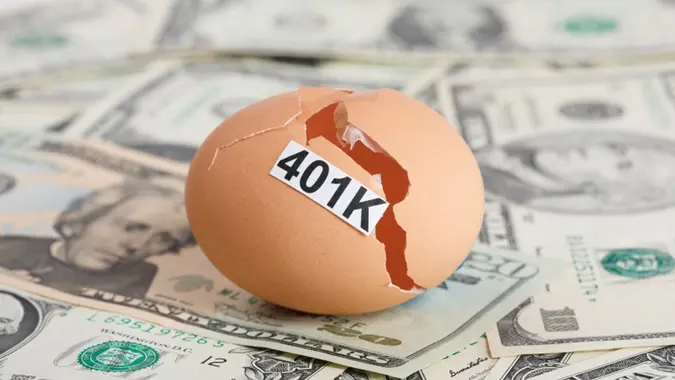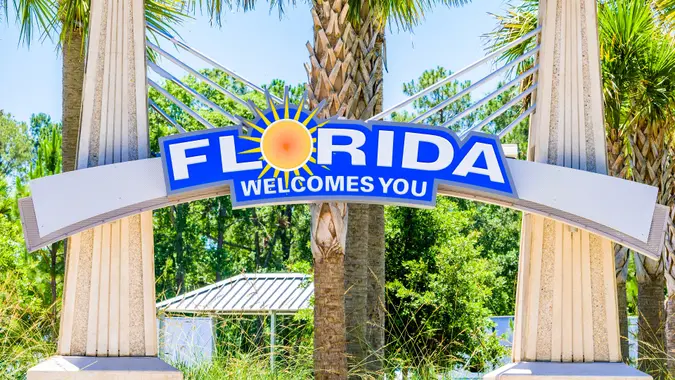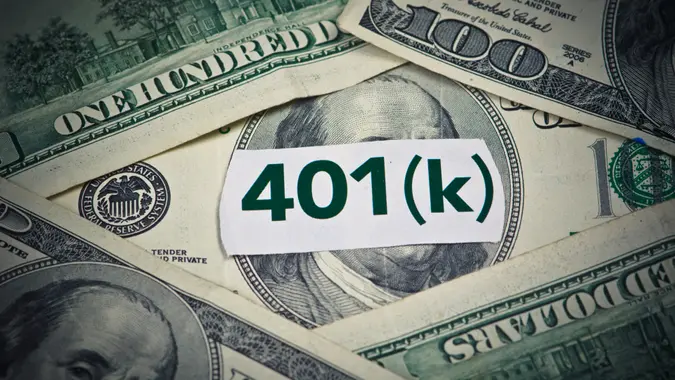How Many People Made Early 401(k) Withdrawals in 2024 — and How To Avoid the Same

Commitment to Our Readers
GOBankingRates' editorial team is committed to bringing you unbiased reviews and information. We use data-driven methodologies to evaluate financial products and services - our reviews and ratings are not influenced by advertisers. You can read more about our editorial guidelines and our products and services review methodology.

20 Years
Helping You Live Richer

Reviewed
by Experts

Trusted by
Millions of Readers
For most Americans, saving for retirement means opening an employer-sponsored 401(k) plan and contributing to it regularly. Ideally, those contributions will continue for decades, with no need to tap into the account early. But that’s not always possible.
A rising number of Americans are making early 401(k) withdrawals to deal with financial emergencies. A recent Vanguard study found that 4.8% of participants initiated a hardship withdrawal in 2024, up from 3.6% in 2023.
As Vanguard noted, this trend isn’t necessarily surprising. Not only are more people opening 401(k) accounts — they also have easier access to hardship withdrawals than they used to.
GOBankingRates dove into these statistics and listed several ways to avoid withdrawing early from your 401(k) plan.
What Is a Hardship Withdrawal?
You might see hardship withdrawals increase even more in the future as 401(k) plans launch a provision of a 2022 law that “allows one penalty-free annual withdrawal of up to $1,000 for emergency expenses,” the Wall Street Journal reported.
The IRS describes a hardship withdrawal as one that’s made “because of an immediate and heavy financial need.” It is limited to the amount “necessary to satisfy that financial need.” If you do make a hardship withdrawal, here are some of the consequences cited by the IRS:
- The distribution amount will permanently reduce the amount you’ll have in the plan at retirement.
- You must pay income tax on any previously untaxed money you receive as a hardship distribution.
- You might also have to pay an additional 10% tax unless you’re age 59½ or older or qualify for another exception.
- You might not be able to contribute to your account for six months after you receive the hardship distribution.
Ways To Avoid Making a 401(k) Hardship Withdrawal
If you need to tap into your 401(k) account but don’t want to take a hardship withdrawal, one option is to get a 401(k) loan. Unlike a hardship withdrawal, you must repay a 401(k) loan and a “reasonable interest rate,” according to a blog from Bankers Life. However, this is a preferable option because the interest and repayment “help reduce the negative impact on your long-term savings.”
Another option is to access any 401(k) after-tax funds that might be available in your account. Voya Financial recommends contacting your plan administrator to find out what it would take to access the money.
If you face a medical hardship, both Bankers Life and Voya suggest seeing if your medical provider will let you set up a payment plan before taking a 401(k) hardship withdrawal. As Bankers Life noted, most healthcare organizations are “willing to offer more flexible payment arrangements.” A payment plan might also be an option if you need the money to make a rent or mortgage payment.
If none of the above options are available, then research state and federal government programs that help you pay for housing and other essentials. You might find programs or benefits that let you avoid having to take an early withdrawal from your 401(k).
More From GOBankingRates
 Written by
Written by  Edited by
Edited by 

























